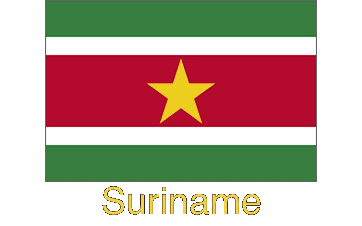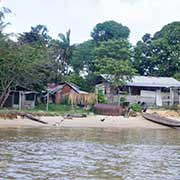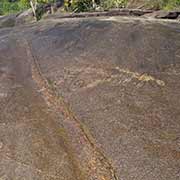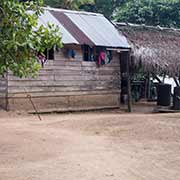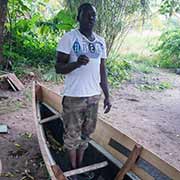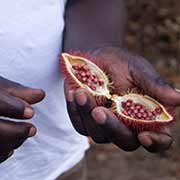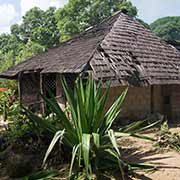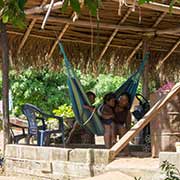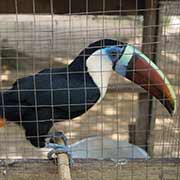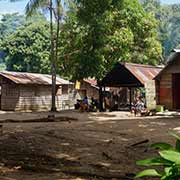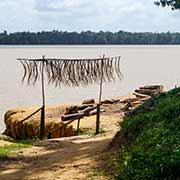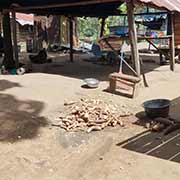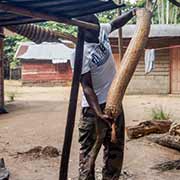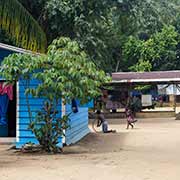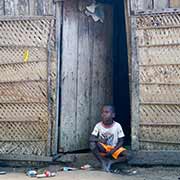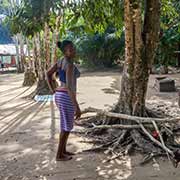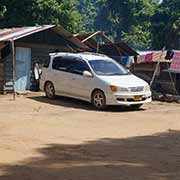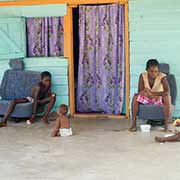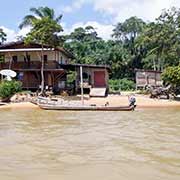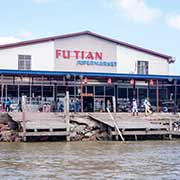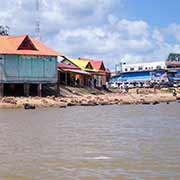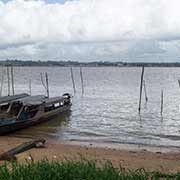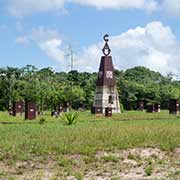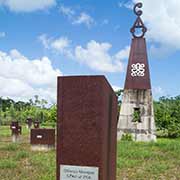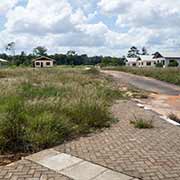Photos of Marowijne, Suriname's North-east, Suriname
Marowijne, Suriname's North-east
The Marowijne District, on the north-east coast of Suriname, was the site of Alcoa's first bauxite mine in Moengo; during the early 20th century, bauxite was discovered here, leading to a boom in mining that significantly enriched the entire country. The ore was transported to the Paramaribo Alumina Refinery in Paranam; however, the alumina refinery and bauxite mines are now permanently closed, a major blow to the economy of Suriname.
you may then send it as a postcard if you wish.
Marowijne's capital city is Albina, on the Marowijne river (Maroni in French) that forms the border with French Guiana; the town of Saint-Laurent-du-Maroni lies opposite. Albina was founded around 1846 by a German military man who named it after his fiancé. Gold was discovered 30 years later and the town grew during the early 20th century as a tourist resort; however, during the civil war of 1986 between Ronnie Brunswijk's Jungle Commando and the army it was almost completely destroyed. There is still some tourism on the oceanfront, at the mouth of the river, in the nature reserve of Galibi; two small Carib Amerindian villages are in this region.
West of Albina, along the main road, is Moiwana, a Maroon village that was the scene of a massacre on 29 November 1986, during the Suriname Guerrilla War between the Surinamese military regime, headed by Dési Bouterse, and the Jungle Commando led by Ronnie Brunswijk. The army attacked the village, killing at least 35 of the inhabitants, mostly women and children, and burned Brunswijk's house. There is now a monument featuring an 11 metre high central pillar with symbols of Solidarity and the word "Kibi Wi" (Protect Us), with 38 small pillars, each with the name of a victim of the massacre. It is inscribed in both Latin and Afaka script, a syllabary of 56 letters devised in 1910 for the Ndyuka language, an English-based creole spoken by the local Maroon people.
Further inland are other Maroon villages, home to descendants of slaves who escaped from the Dutch plantations during the 18th century. They managed to get autonomy for their interior settlements by a 1785 peace treaty with the Dutch colonial authorities, granting the Maroons sovereign status and trade rights in their inland territories. One of those villages is Malinka, on the west bank of the Marowijne River; Bigiston, further south along the river, used to be an Indian village called Temeri, and now has a mixed Arawak and Maroon population. Its name is derived from "Big Stone" and refers to large boulder in the river, with inscriptions, made long ago by local Arawak Amerindians.


